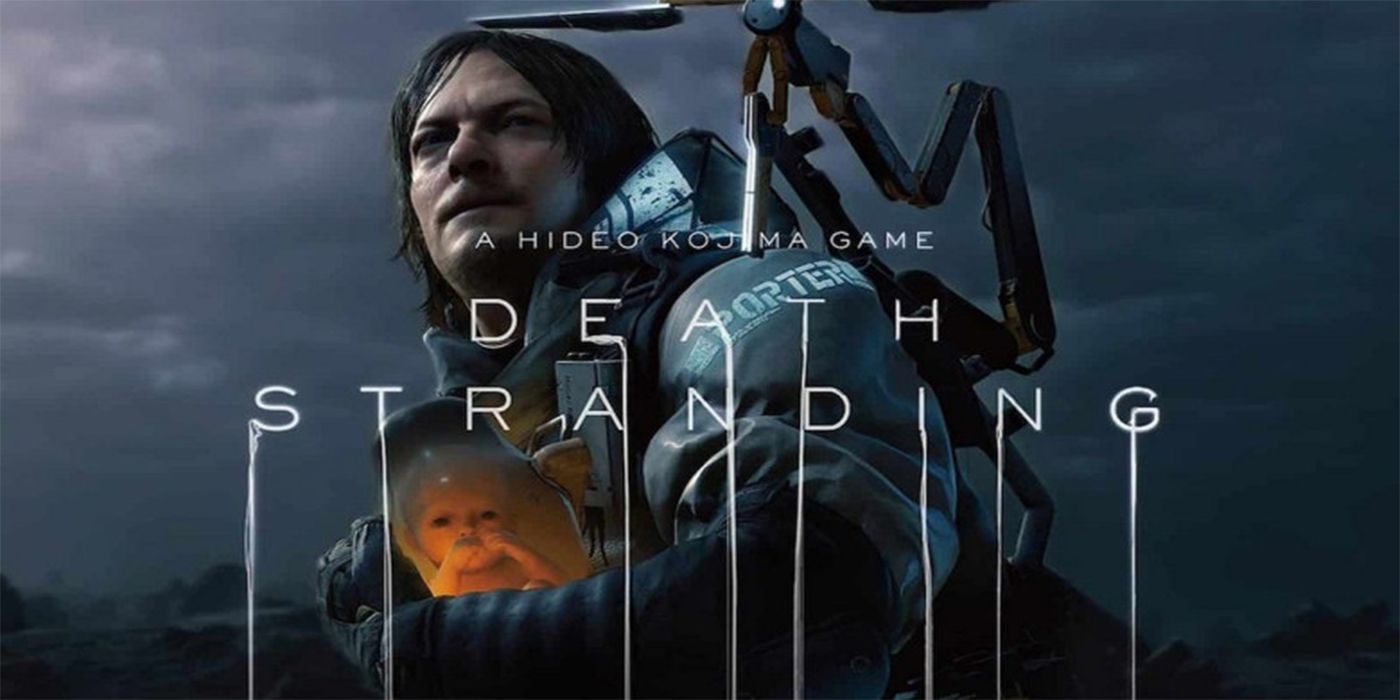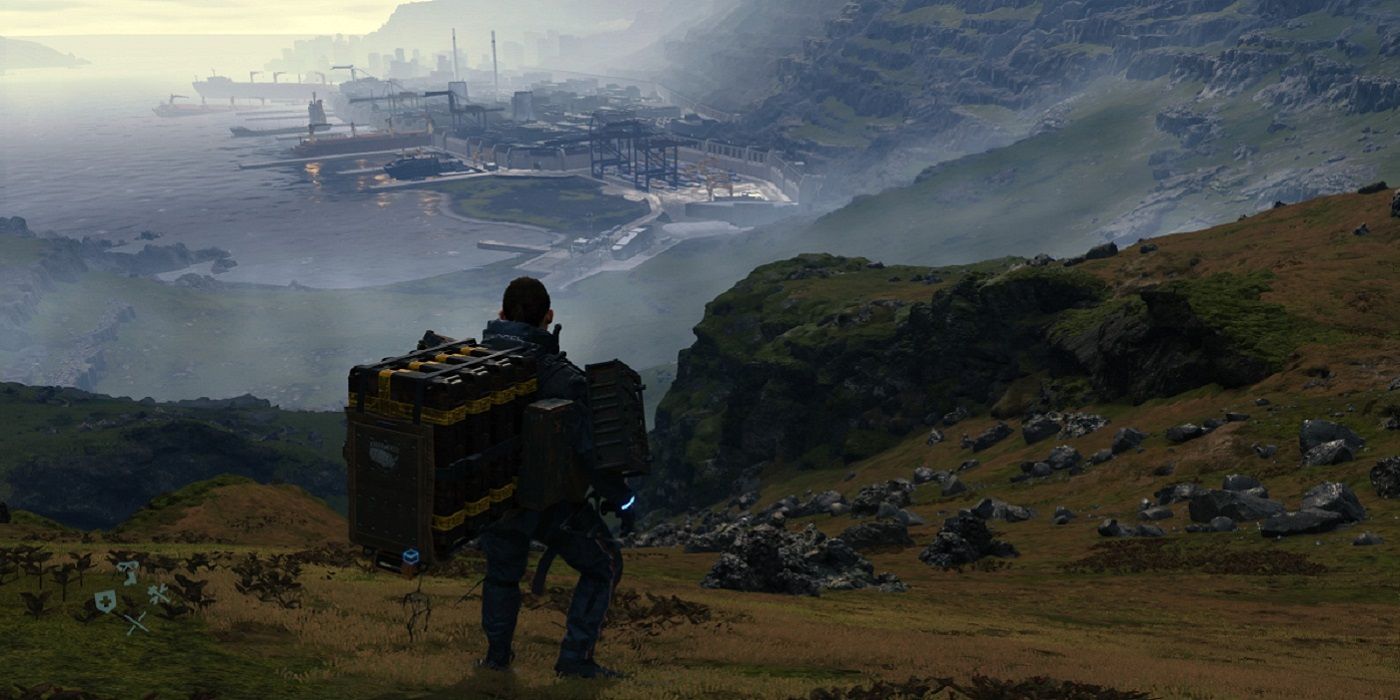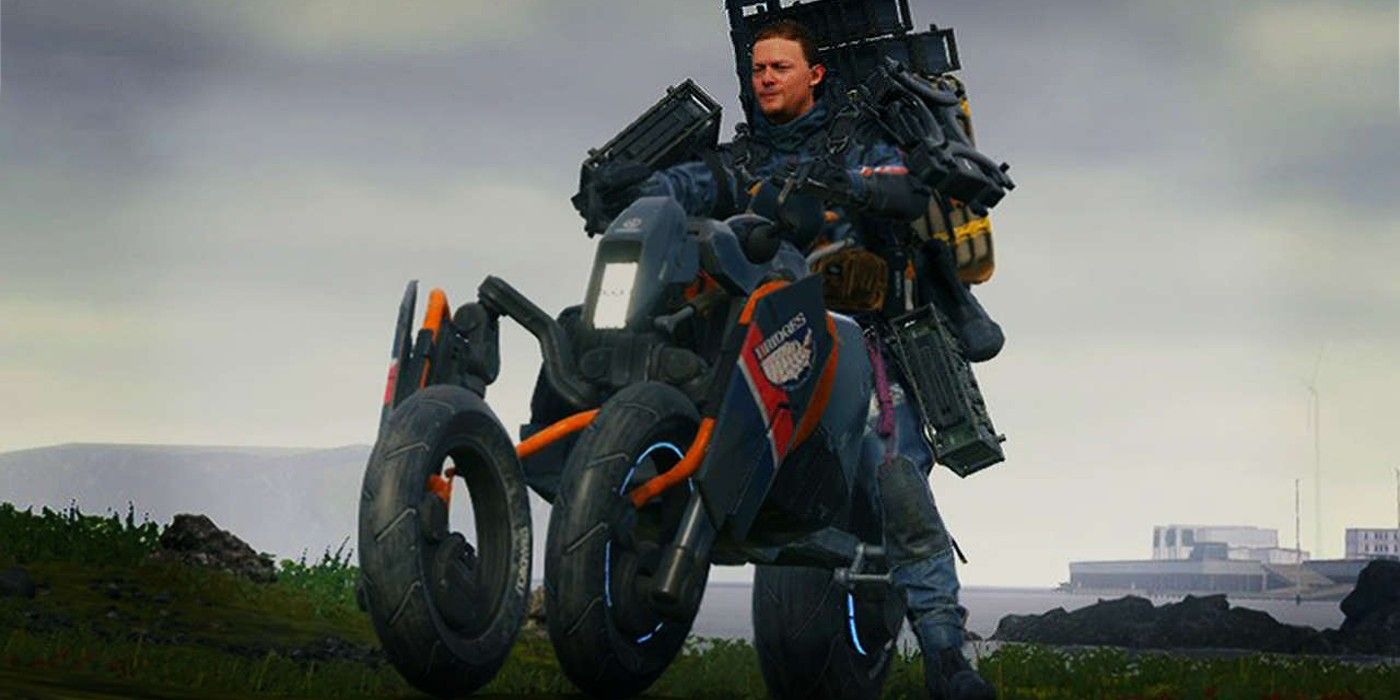Since its reveal all the way back in 2016, fans have been confused about what Hideo Kojima's Death Stranding actually is. The game is now out and reviews are in, and while it's certainly one of the more divisive games of the year, the feedback has generally been positive. That being said, there are still lots of questions about what players do in Death Stranding, and not every review has been able to answer that question.
The short answer is: walk. At least as far as gameplay is concerned, players will spend most of their time moving between major cities and waystations with a back full of deliveries, struggling to keep their balance as the elements, terrain, and enemies work against them. From a surface level, it sounds incredibly boring. Were Death Stranding a typical game, that would be the case. At its core, what Death Stranding is is a video game flipped on its head, though it can be a little bit difficult to understand what that means. Death Stranding, even according to Kojima, centers on walking, but it has to be one of the most absorbing walking simulators out there.
In most games traveling is what a player does in between conflicts. Most open-world games follow this formula, from The Witcher to Skyrim to Grand Theft Auto. In Death Stranding, traveling is the conflict, sometimes interrupted by a group of bandits, called MULES, or the supernatural B.T. enemies. At first, it'll make it feel like nothing is happening. That isn't necessarily the case. The core mechanic of maintaining balance and moving across the world is actually really entertaining. For some, that won't be able to carry throughout an entire 50-hour game, but for others, there should be plenty to enjoy. At the end of the day, the deciding factor as to whether or not players will like Death Stranding is if they get more out of a journey or the destination.
There are, of course, other aspects to Death Stranding. Plotting out a journey can actually get pretty complex. Players have to make decisions as far as how much they'll try to carry - potentially slowing down progress to a crawl, plot out what gear they'll need to make it to the finish line, and adjust their route for unforeseen obstacles. All the while, players have to ensure that they deliver the cargo intact and, sometimes, on time. They'll have to soothe BB, the baby from all the trailers, or it won't be able to detect the spooky, scary ghost monsters all across post-apocalyptic America. Yes, one major aspect of Death Stranding is keeping the baby calm so it can see ghosts.
There's also a social aspect to Death Stranding. Not only that, but it may be one of the best social integrations in a game to date. Players can only really help each other, or at least, players don't seem to have figured out ways to troll each other quite yet, though it's likely an inevitability. Players can see structures left behind by other players in the game, which can be a great help in a bind. Coming across a ladder when there's a desperate need for a ladder is an amazing feeling. There are very few circumstances where a random player gets to be a hero, but Death Stranding turns them into an essential part of the game.
The story of Death Stranding is a tad bit harder to explain without spoiling anything. Without diving into any major plot points, it's about reconnecting a shattered, disconnected America by putting them back on a single network. There's a clear message here about the disconnection in the world today wrought by social media, which can be a bit on the nose at times. It can be a little bit distracting seeing big-name actors mingling together in a video game, but it does highlight Kojima's desire to make movies. Kojima has said that Kojima Productions will make movies, and Death Stranding is a pretty good indicator of what those movies may wind up being like.
There are, however, some key things players will want to know to understand what Death Stranding is about. There's the Beach, which is sort of a limbo world between the world of the living and the dead. It's one of the most stunning locations in Death Stranding, in large part because of the thousands of dead whales laying there. Necrosis is the condition that occurs after someone dies in Death Stranding, and leads to the creation of Beached Things - the spooky ghosts that seemingly connect the living world to the dead. Necrosis can also lead to a Voidout, a massive explosion that leaves behind nothing but a giant crater. The Death Stranding occurred after the first Voidouts destabilized the world.
There are a few things that make Sam special in the world of Death Stranding, the first being DOOMs. It's a condition that gives Sam the ability to sense BTs, though he isn't sensitive enough to actually see them. Sam is also a Repatriate, someone that can return to the world of the living after death. As most can guess, it makes him an incredibly special person, the perfect candidate to reconnect the United Cities of America.
There are a ton of other elements within Death Stranding's story that would seemingly need a novel to fully explain, including its many real-world influences. Take BB, for instance. BBs in Death Stranding are unborn babies whose mothers died while they were in the womb. The BBs are kept in conditions mirroring the womb to keep up the illusion of still being with their mothers. This forms a sort of connection with the world of the dead, allowing the BBs to sense BTs. Simple. There's also rain, dubbed Timefall, that makes things, both people and inanimate objects, age faster.
Kojima is an enigma. Even while working on the game, Mads Mikkelsen confessed that he didn't understand the story, much like many others that had been watching the game take shape through the various trailers released leading up to launch. Death Stranding is a complicated game, sure, but Kojima has managed to make something that should be boring entertaining for at least some people out there, which is an impressive feat.
The community of Death Stranding, the ones not review-bombing the game, will have a profound effect in shaping its future. Players that pick it up in a year or two are in for a much more solemn experience, as a smaller player base will undoubtedly have an effect on the structures shared throughout the journey. Or, who knows, maybe those players will begin their journeys with a world already full of roads, structures, and tools for them to use, making their journey far less daunting. Only time will tell. As it stands, Death Stranding is a complex walking simulator with an interesting, but occasionally convoluted, story.
Death Stranding is available now on PS4, with a PC release coming in Summer 2020.
MORE: Norman Reedus is Glad Silent Hills Didn't Get Released



